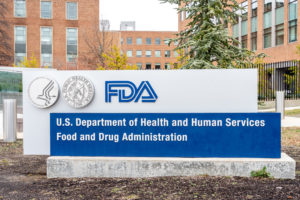
Blog
Facts Over Misinformation: The Reality of the Strict Standards Brands Must Follow
The latest batch of clickbait-laden headlines, sparked by a Consumer Reports’ article questioning the safety and inclusion of Lunchables and similar food kits in school cafeterias, ignores strict safety standards in favor of conjecture that only stands to confuse parents and school professionals.
Buried under paragraphs of fear-mongering language and graphs, the report finally gets to the truth: “some contaminants, like lead and cadmium, are naturally found in the environment, which can partly account for their presence in food.” Sodium values were all within the range permitted by the Food and Drug Administration. Even more telling, “None of the kits we looked at exceeded any legal or regulatory limit.” Full stop. There are very specific standards food companies must follow to offer their products in both the retail and school environments, and FDA puts the onus on the manufacturer to meet and stay in adherence with requirements. By Consumer Reports own admission, these food kits meet those standards. (For a deeper dive on the importance of FDA’s pre- and post-market regulatory activities, read more here).
Consumer Reports has muddied the waters of fact-based decision making by cherry-picking data and holding common food products to inconsistent standards. It exists as another sweeping attempt to demonize the food and beverage industry with a heaping side of online parent shaming. These types of articles are tone deaf to the multitude of real-life, daily circumstances behind a parent’s decision of what to feed their family, whether they are financial or based on the special needs of a family member or offer some time back to a parent trying to manage school, work, activities and life in between. Food and beverage manufacturers constantly innovate to meet consumers’ evolving wants and dietary needs. And the reality is indisputable — multiple federal agencies set strict safety and nutrition standards that must be adhered to when getting a product to market.
In a statement from the company, Kraft Heinz clarified that “All our products tested well below the acceptable limits. The metals they focus on are naturally occurring, and thus low levels may be present in any food product. We do not add these elements to our products.
“Additionally, the National School Lunch Program-approved Lunchables adhere to all USDA standards. We increased the amount of meat in the products to increase protein levels and help fuel kids throughout the day. With more meat comes naturally elevated levels of sodium to ensure safe preservation of the product. It’s worth reiterating that Consumer Reports did not test our school products.”
The CPG industry, including the food and beverage companies we represent, is equally committed to product safety and consumer transparency. Building consumer trust starts with a commitment to making safe, affordable and convenient products that consumers want and need, which extends to the grocery store and the cafeteria. We’ve addressed the inherent harm behind this continued and blatant misrepresentation of the industry, and we’ll always defend consumers against unnecessary judgment when they are simply trying to make the best choices for their families.
Published on April 12, 2024




